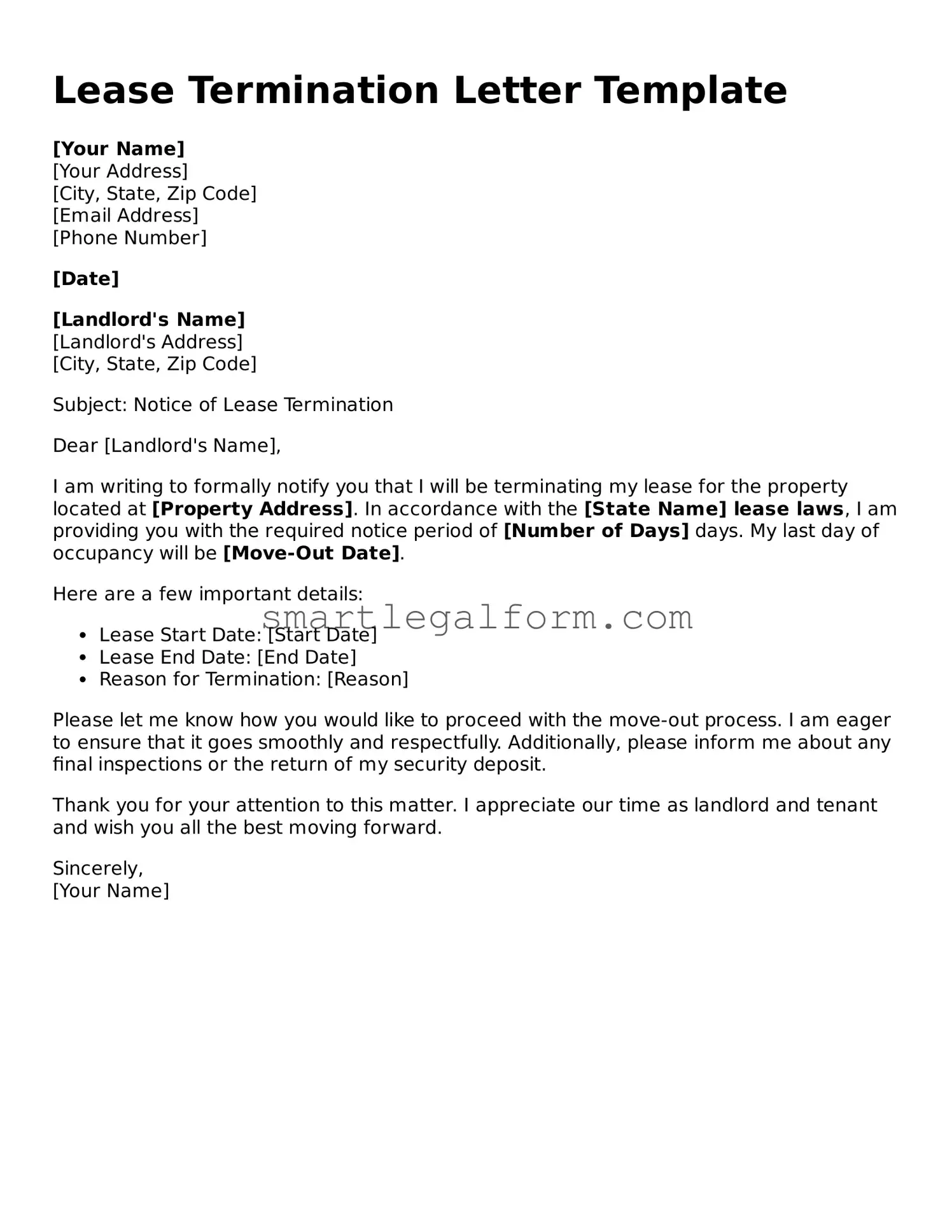Attorney-Approved Lease Termination Letter Form
A Lease Termination Letter is a formal document that notifies a landlord or tenant of the intention to end a lease agreement. This letter serves as an official record of the termination and outlines the necessary details, such as the termination date and any required notices. Understanding how to properly complete this form is essential for ensuring a smooth transition out of a rental property.
To get started, fill out the Lease Termination Letter form by clicking the button below.
Fill Out Your Form Online
